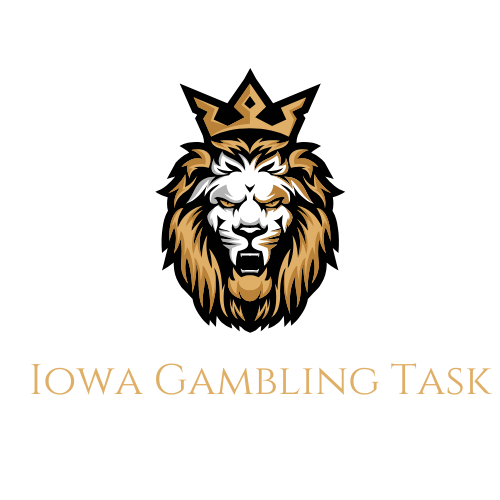Introduction
The Iowa Gambling Task (IGT) is a psychological assessment tool designed to evaluate decision-making skills under conditions of uncertainty. Developed by neuroscientists Antoine Bechara, Antonio Damasio, Hanna Damasio, and Steven Anderson at the University of Iowa in the 1990s, the IGT has become a widely used test in cognitive neuroscience and psychology. It simulates real-life decision-making, requiring participants to weigh potential rewards against risks to maximize their outcomes. The task has been instrumental in understanding how individuals, both neurologically healthy and those with cognitive impairments, respond to uncertainty and risk. By analyzing choices made throughout the task, researchers gain insights into the mechanisms that underlie impulsivity, foresight, and the ability to learn from negative experiences.
The Structure of the Iowa Gambling Task
The IGT presents participants with four virtual decks of cards labeled A, B, C, and D. Each time a participant selects a card, they either receive a financial reward or incur a financial loss. The goal is to maximize profit over a series of trials, typically 100 selections. Unbeknownst to participants at the beginning, the decks are rigged with different reward-risk structures. Decks A and B offer high immediate rewards but also come with large, unpredictable penalties, leading to overall net losses in the long run. In contrast, Decks C and D provide smaller rewards but with much lower penalties, ultimately resulting in net gains over time. Participants must learn through experience which decks are advantageous and which ones lead to financial ruin. The task is designed to simulate real-world decision-making, where individuals are often faced with choices that have both immediate and delayed consequences. Over time, healthy participants typically shift towards choosing the advantageous decks, whereas individuals with impaired decision-making, such as those with frontal lobe damage or certain psychiatric disorders, often persist in choosing disadvantageous decks despite negative outcomes.
Cognitive and Neurological Basis
The Iowa Gambling Task is primarily used to measure decision-making influenced by the brain’s reward and punishment systems, particularly within the prefrontal cortex. Studies have shown that individuals with damage to the ventromedial prefrontal cortex (vmPFC) exhibit significant impairments in the task, often selecting high-risk decks even when it results in consistent losses. This phenomenon supports the somatic marker hypothesis, proposed by Antonio Damasio, which suggests that emotional signals, known as somatic markers, help guide decision-making by attaching values to different choices based on past experiences. According to this theory, emotions play a crucial role in rational decision-making by helping individuals predict the future consequences of their actions. The IGT also engages the amygdala, which processes emotional responses, and the striatum, which plays a role in reward-based learning. Additionally, research using functional neuroimaging has shown that successful performance on the IGT requires an interplay between cognitive control, emotional regulation, and risk evaluation. These findings highlight the complexity of human decision-making and suggest that it is not solely based on logic but also significantly influenced by emotional and physiological responses to past experiences.
Applications of the Iowa Gambling Task
The IGT has been widely used in cognitive neuroscience, psychology, and behavioral economics to understand decision-making processes. In neuroscience and psychology, it has been instrumental in studying individuals with brain injuries, particularly those with damage to the vmPFC, who show impaired decision-making abilities. The task has also been used to examine decision-making deficits in individuals with substance use disorders, as many drug-addicted individuals tend to persist in choosing disadvantageous decks, reflecting an impaired ability to assess risks and rewards. Similarly, it has been applied to psychiatric disorders such as schizophrenia, bipolar disorder, and obsessive-compulsive disorder (OCD), where decision-making impairments are commonly observed. Beyond clinical applications, the IGT has had significant implications in behavioral economics and business. It has provided valuable insights into how individuals evaluate risks and rewards in real-world financial scenarios, including investment decisions and gambling behaviors. The task has been particularly useful in understanding impulsivity in financial decision-making, helping researchers explore why some individuals prioritize short-term gains despite long-term losses. Additionally, it has been used in marketing and consumer behavior studies to analyze how people make purchasing decisions under conditions of uncertainty. The insights gained from IGT research have influenced policy-making in areas such as addiction treatment, financial decision-making, and public health interventions aimed at improving risk literacy.
Criticisms and Limitations
Despite its widespread use and valuable contributions to understanding decision-making, the Iowa Gambling Task is not without its criticisms. One major limitation is the inconsistency in results across different studies. Some researchers have pointed out that cultural and individual differences play a significant role in how people approach the task, leading to variability in performance. Additionally, the IGT has been criticized for its limited ecological validity. While it is designed to simulate real-life decision-making, some argue that it does not fully capture the complexity of real-world choices, particularly those involving social and emotional factors. Another issue is that alternative explanations exist for IGT performance. Some researchers suggest that success on the task may not be solely due to emotional decision-making but could also be influenced by cognitive abilities such as working memory, attention, and pattern recognition. Furthermore, individual differences in learning styles and risk tolerance can affect how participants perform on the task, making it difficult to draw universal conclusions about decision-making abilities based on IGT results alone. Future research may benefit from refining the task to incorporate more diverse decision-making scenarios and control for cognitive factors that could influence performance.
Conclusion
The Iowa Gambling Task remains a cornerstone in the study of decision-making, providing crucial insights into the neural and psychological mechanisms that underlie risk assessment and impulsivity. While it has been widely applied in neuroscience, psychology, and economics, ongoing research continues to refine its methodology and explore new applications. Despite its limitations, the IGT has significantly contributed to our understanding of human behavior and decision-making processes, particularly in clinical populations where impairments in risk evaluation can have profound consequences. As research advances, further improvements to the task and its applications may enhance its ability to provide even more detailed insights into the complexities of human cognition and decision-making. Understanding the mechanisms behind the choices people make in uncertain situations can ultimately help inform strategies for improving decision-making in various aspects of life, from healthcare to finance and beyond.

